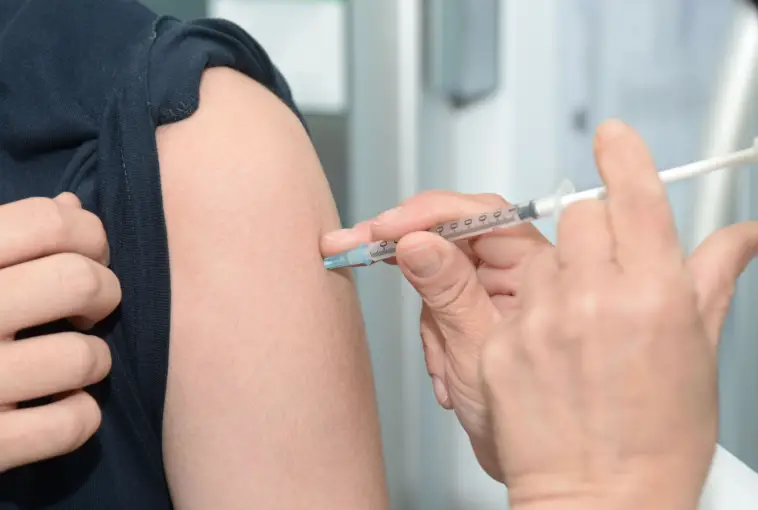TRT, or Testosterone Replacement Therapy, is a medical treatment protocol aimed at increasing the levels of testosterone in men who suffer from low testosterone, often known as “Low T”. The therapy can help improve mood, energy, sex drive, and even physical health.
The process of TRT is typically administered in the following steps:
- Consultation and Testing: Initially, a consultation with a medical professional is required to discuss symptoms and undergo blood tests to measure testosterone levels.
- Diagnosis and Prescription: If the testosterone levels are proven to be low, a healthcare professional diagnoses the patient with low testosterone. The healthcare provider then prescribes a suitable dosage of testosterone, which can be administered in various forms including injections, skin gels, patches, or implants.
- Administration of Therapy: The patient begins the testosterone replacement therapy as per the prescribed method. This might be a weekly injection, daily gel application, or other method depending on the form of testosterone prescribed.
- Monitoring and Adjustment: Throughout the treatment, the patient’s testosterone levels are regularly monitored. Based on the results and any side effects, the doctor may adjust the dosage.
- Long-term Follow-up: Long-term follow-up appointments ensure the treatment’s effectiveness and monitor for potential side effects. This includes regular checks on blood testosterone levels, red cell counts, and other health indicators.
It’s important to remember that while TRT can have several benefits, it also carries potential risks and side effects. Therefore, it’s crucial to have a detailed and open discussion with a healthcare provider at Testosterone Replacement Santa Monica before beginning the therapy.
Testosterone Replacement Santa Monica Long-Term Effects and Safety
The long-term effects and safety of TRT at Testosterone Replacement Santa Monica can vary from person to person. Here are some key points to consider:
- Positive Long-Term Effects: Many men who undergo TRT observe improved mood, increased energy levels, better sexual function, and enhanced overall quality of life. They may also experience increased muscle mass and decreased body fat.
- Potential Risks and Side Effects: On the other hand, there are potential risks and side effects associated with TRT. These may include sleep apnea, acne or other skin reactions, testicular shrinkage, increased risk of heart disease, and a higher likelihood of blood clots.
- Prostate Health: While most research indicates that TRT doesn’t cause prostate cancer, it’s essential to monitor prostate health due to an increased risk of benign prostatic hyperplasia (BPH) or worsening of existing prostate cancer.
- Bone Health: While TRT can help increase bone density, the effect on fracture risk is unclear.
- Cardiovascular Health: Some studies suggest TRT may increase the risk of cardiovascular conditions, including heart attacks and strokes, especially in the first few months of therapy. However, other research indicates no increased risk, and some even suggest potential cardiovascular benefits.
Given these potential effects and risks, it’s crucial to undertake regular checkups and screenings as part of a comprehensive monitoring strategy when undergoing TRT at Testosterone Replacement Santa Monica. This ensures any potential side-effects or health issues are detected and addressed promptly.
Testosterone Replacement Santa Monica Special Considerations
TRT in older adults
When considering TRT in older adults, special attention must be paid to the unique health concerns of this demographic. Age-related factors can potentially influence the effectiveness and safety of the treatment. For example, older men often experience a natural decline in testosterone levels, commonly referred to as “andropause”. While this decline is a normal part of aging, it can sometimes lead to symptoms that mimic those of low testosterone, complicating diagnosis.
Furthermore, older adults may be more susceptible to certain side effects of TRT, such as cardiovascular conditions and prostate issues. As a result, the benefits and risks of TRT need to be carefully weighed in older patients. Regular monitoring is also crucial to promptly detect and address any emerging health issues.
TRT in younger adults and adolescents
In younger adults and adolescents, the use of TRT is typically limited to treating medical conditions that result in abnormally low levels of testosterone, such as hypogonadism. It’s important to note that testosterone levels naturally increase during adolescence, playing a key role in development. Therefore, TRT at Testosterone Replacement Santa Monica in this age group must be approached with caution. Potential side effects, particularly those impacting physical development and fertility, need to be considered. Also, it’s crucial to rule out any natural hormonal imbalances that could be misconstrued as a need for testosterone supplementation. As with older adults, regular monitoring and careful medical supervision are paramount when administering TRT in younger adults and adolescents.
TRT in women
While Testosterone Replacement Therapy (TRT) is most commonly associated with men, it can also be beneficial for women in certain situations. Women’s bodies naturally produce testosterone, although in much lower amounts than men. When a woman’s testosterone levels fall too low, she may experience symptoms such as fatigue, mood swings, reduced sexual desire, and bone loss. In such cases, TRT might be considered. However, it’s important to approach TRT in women with caution due to potential side effects like voice deepening, increased body hair, and changes in menstrual cycles. Furthermore, there’s an elevated risk of cardiovascular issues and breast cancer associated with TRT in women. As with any hormonal therapy, the benefits and risks should be thoroughly discussed with a healthcare provider before beginning treatment. Ongoing monitoring is crucial to ensure the therapy is safe and effective, and to adjust dosage as needed.
TRT in transgender individuals
Testosterone Replacement Therapy (TRT) plays a significant role in the transition process for transgender men, or individuals assigned female at birth who identify as male. When administered under medical supervision, TRT can help to induce masculinizing effects such as increased muscle mass, deeper voice, growth of facial and body hair, and cessation of menstruation. However, it’s critical to approach TRT with an understanding of potential risks and side effects, such as acne, mood swings, and an increased red cell count, which can contribute to blood clots and strokes. Furthermore, long-term use of TRT in transgender individuals can affect fertility and lead to irreversible changes. As such, decisions about TRT should be made in collaboration with knowledgeable healthcare providers, and regular health monitoring is essential to manage potential risks and ensure the effectiveness of the therapy.




